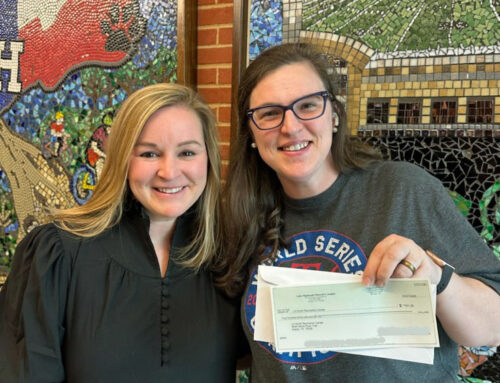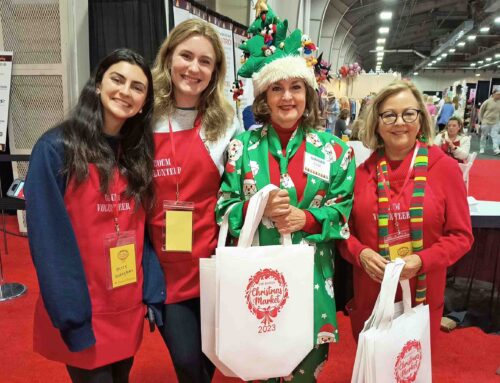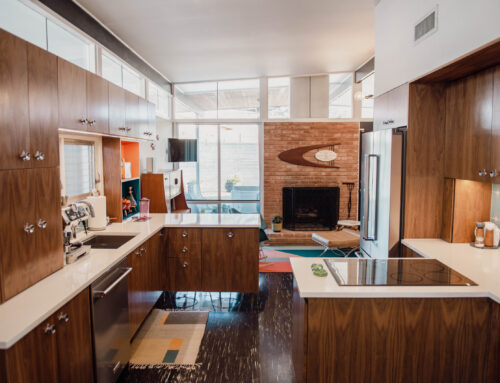Cheryl Boudreau laughs when asked whether it’s true that the contract on her house contained a deed restriction requiring new owners to participate in the “Twelve Days of Christmas” tradition.
“It was mentioned,” she says good-naturedly, “but it wasn’t like coercion.”
It has been six years since her family moved into the quiet cul-de-sac on Timberhollow Circle in Lake Highlands and inherited the responsibility – should they choose to accept it – of continuing a tradition established more than 15 years ago on their street.
“It’s kind of a package deal when you move in,” Boudreau says.
All the homes place a painted wood display of one of the “Twelve Days” on their lawns. The Boudreaus moved into the “Nine Maids a Milking” house and trot out the original wooden display left by previous owners. Well, it’s almost the same.
“I gave my nine ladies a makeover last year,” confides Boudreau. “I had them painted.”
No one knows what would have happened if the Boudreaus or any of the other new owners on the block declined to participate in the tradition started by Donna “Seven Swans a Swimming” Jenkins and several other original homeowners when their now-grown children used to gather on bikes at the end of the cul-de-sac.
A couple of parents came up with the idea on a Thanksgiving weekend and challenged themselves to produce individual yard displays by the first of December. They gathered up children’s books to get ideas and made a run to the store for piles of plywood. They gathered in garages to work together on most of the displays.
“It was fun because we really got to know each other,” recalls Jenkins, whose family has lived in their home for 24 years.
She has seen a lot of families come and go over the years but, amazingly, the departing families always leave their yard display for the new homeowner. And now one who has moved onto the street has declined to become a part of the tradition.
There are 14 homes – one for each of the 12 days, and the first and last homes on the street feature “welcome” and “goodbye” signs so they are part of the group identity.
“I don’t think we realized at that time how it was going to be,” Jenkins says, still somewhat incredulous that the tradition has continued unassisted.
New homeowners such as Boudreau confess to being a little overwhelmed initially.
“I was worried, ‘Ohmigod, are we going to be able to get to our houses in December?’” she says.
The concerns were not without merit. Each year as word of the unique display spreads, the number of onlookers trying to turn around in the cul-de-sac has grown. The attraction has drawn tour buses, limousines, people on horseback and even folks on a hayride.
Some people, such as the Boudreaus, are recruited to the holiday decoration movement. Others lead the charge. Not far away, another Lake Highlands family has been growing its holiday light display for 27 years.
Jim Shultz, 48, traces his decorating fervor to a disappointing childhood Christmas in what he calls an “Archie Bunker neighborhood” in Pennsylvania where he was raised. One year, someone broke the modest lights around his family’s front door frame, and his father decided not to replace them.
“I said, “When I grow up, I’m going to always put lights up,” Shultz vowed.
And since October 1977, when he and wife Linda bought their house on Club Meadows Drive, he has.
What neither he nor Linda knew was that his determination would grow into a passion that was destined to grow with such ferocity.
“I remember when I got to 3,000 (lights), I thought, ‘Boy!’ but now it doesn’t seem like the place is lit” with only that many, Shultz says.
That’s because now he’s up to about 14,000 lights. He didn’t get there without a lot of help – from an electrician. When the family added a room over the garage, they told the contractor to add more breakers and outdoor outlets.
“He said, ‘What in the world do you want an outlet for outside? It’s over the roof!’” Shultz recalls with a laugh. But he got the circuits and now says, “that gave me the amps I needed to go forward.”
Of course, even with extra electrical capacity, 14,000 lights put a strain on the household.
“We always tell people I don’t vacuum after dark from Thanksgiving to New Years,” jokes Linda.
Needless to say, the ever-expanding display has an impact on other homeowners in the neighborhood near Moss Haven Elementary.
“A lot of people say, ‘Oh, you live on the street with all the lights,’” says neighbor Carolyn White. “We like it because my kids have always liked it. My children were just mesmerized.”
The only downside, she said, is that her children want their own extravagant display.
“It’s like, ‘Why can’t we have lights?’” White says. “And I’m like, ‘I can’t get the laundry done, and you want me to do lights?’
“Every year, I kick myself that we don’t have hot chocolate sales for the buses that line up to see it,” she adds. “We’ve always laughed that we could really make some money.”
And every year, particularly because Shultz works for Texas Instruments, someone asks the obvious question: Is he an electrical engineer? (No, he works on procurement and logistics systems.)
But he plots like a scientist. Each light and ornament goes into one of dozens of specially marked boxes that line an entire garage wall all year long. They’re organized by section of the yard, with scribbled notes such as “west side crepe myrtle.”
There are angels and elves, candy canes, three reindeer, a wooden gaslight, a star for the roof and swinging chimes that play Christmas carols. The entire front lawn is covered with lights laid out on a grid.
All the purchases are an investment, even at sale prices.
“It’s not unusual for me to buy several thousand after Christmas just to have as spares,” Shultz says.
“It’s really Jim’s hobby,” Linda says. “All year, he thinks about it.”
Back problems have slowed his pace a little, and the couple may not be totally in sync on whether that should stem the annual expansion of the previous year’s display.
“She’s told me that I’ve reached my match, but if I could get one more breaker in…” Jim says.
Linda chimes in: “I think we’re probably maxed out.”
But before her words are even out, Jim adds, “I think there’s probably room to grow.”





